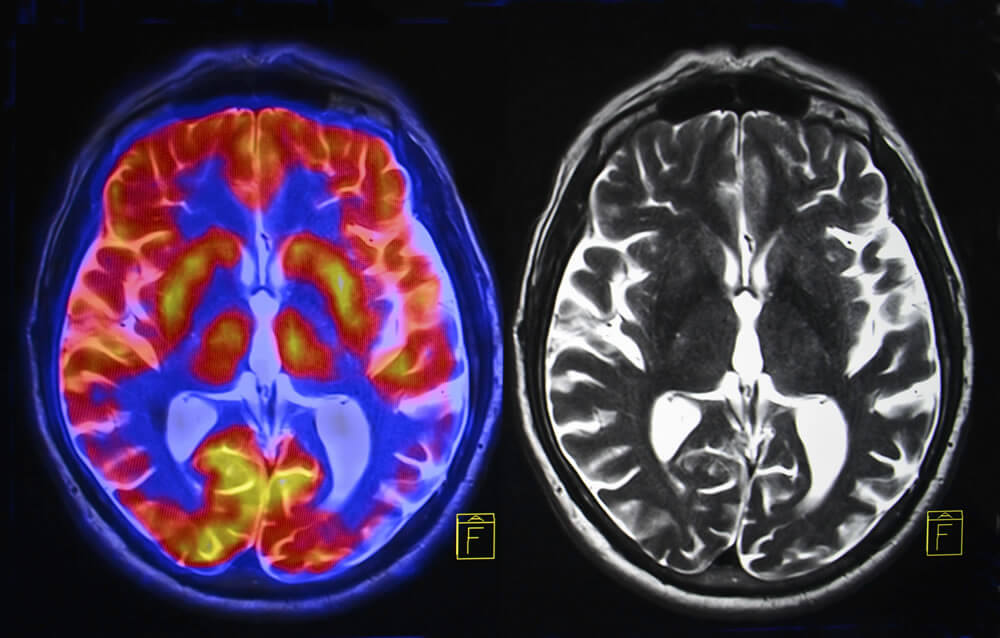A Beautiful Find: Facilitating Schizophrenia Research

Think “big data” and schizophrenia research probably isn’t the first subject that comes to mind. But that’s exactly what a USC Information Sciences Institute team is pursuing. Part of a national coalition to foster novel schizophrenia research, ISI is making brain-imaging data far easier to access and integrate across disparate sources including relational, specialized neuroimaging and clinical patient databases.
Called SchizConnect, the project seeks to boost analytic power by increasing the types and volumes of data that schizophrenia researchers can assess. A highly interdisciplinary team includes psychiatrists, psychologists, neuroscientists, radiologists and other collaborators at five universities and research institutes. ISI’s biomedical data integration group, headed by Jose-Luis Ambite, is creating SchizConnect’s key data integration software, while the other four institutions are providing data sets and domain expertise.
“The challenge is to integrate information in ways that researchers can readily access, and still support the very large data volumes they need for discovery and insight,” says Ambite, an ISI research team leader and USC Viterbi School of Engineering research professor in computer science. His group’s solution: novel mediation software that queries heterogeneous data sources, then integrates results in a consistent format. In essence, data appear as a single, uniform source regardless of its origin.
Such federated access is particularly valuable given schizophrenia’s intense complexity. A psychotic disorder characterized by severely impaired thinking, emotions and behaviors, schizophrenia has been vividly portrayed in A Beautiful Mind and many other films. The disease interferes with sensory stimuli filtering, and may produce enhanced or imaginary sounds, colors and other perceptions.
Unravelling those dynamics now relies heavily on structural and functional magnetic resonance imaging of patients’ brains. But such imaging requires costly equipment, major time investments and appropriate patients’ willingness to participate. As a result, studies often are relatively small and geographically localized. Data from each study also tends to be stored in a unique format and repository. While some consolidated data repositories exist, they require data providers to modify their data to conform to the repository’s format, a costly process that raises barriers to entry for smaller projects.
SchizConnect addresses those issues with a virtual data integration system that supports large-scale exploration and analysis of neuroimaging and clinical data from multiple sites, dimensions and modes. Sources include neuroimaging repositories such as XNAT and clinical repositories such as REDCAP. The search-and-download system enables all data to remain in its original source and schema, with no impact on previously collected data. And information stays under each originating project’s control.
The ISI team’s work now delivers access to clinical, cognitive and neuroimaging data for 1,200 diagnosed individuals. Resources are being accessed by 400 neuroscience researchers around the world, who have queried SchizConnect over 3,300 times since 2014. SchizConnect plans to increase to 2,000 subjects, and Ambite expects the system to scale to substantially more sources and much larger data volumes.
Users can formulate queries with an intuitive, drag-and- drop graphical interface. For example, a researcher easily can define a query for T1 scans and cognitive assessments for males less than 20 years old with schizoaffective disorder. SchizConnect identifies relevant sources, translates the query into the appropriate source schemas, executes a distributed access plan and assembles the results in a consistent format.
Data is drawn from leading neuroimaging repositories, including the UCI Functional Biomedical Informatics Research Network, COINS (MCIC, COBRE), and XNAT Central. Other collaborators are the Northwestern University Feinberg School of Medicine, Georgia State University and the Mind Research Network, an Albuquerque, New Mexico-based academic coalition. SchizConnect is funded by the US National Institute of Mental Health, a division of the US Department of Health and Human Services.
The SchizConnect mediator builds on the ISI team’s previous work on the Biomedical Informatics Research Network (BIRN), and is being applied to related projects, such as the Pediatric Research Using Integrated Sensor Monitoring Systems (PRISMS) initiative, which Ambite co- leads with Frank Gilliland, a Keck School of Medicine of USC professor of preventive medicine. SchizConnect “isn’t just advancing mediation systems research,” says Ambite. “It has the potential to have a dramatic impact on the quality of people’s lives.”
Published on September 19th, 2017
Last updated on November 15th, 2022